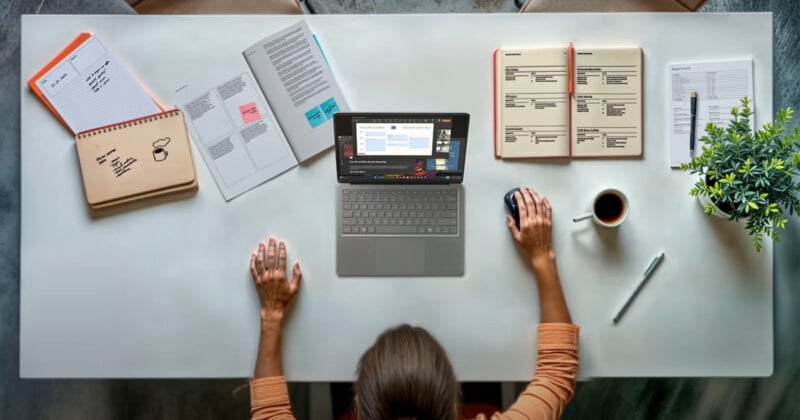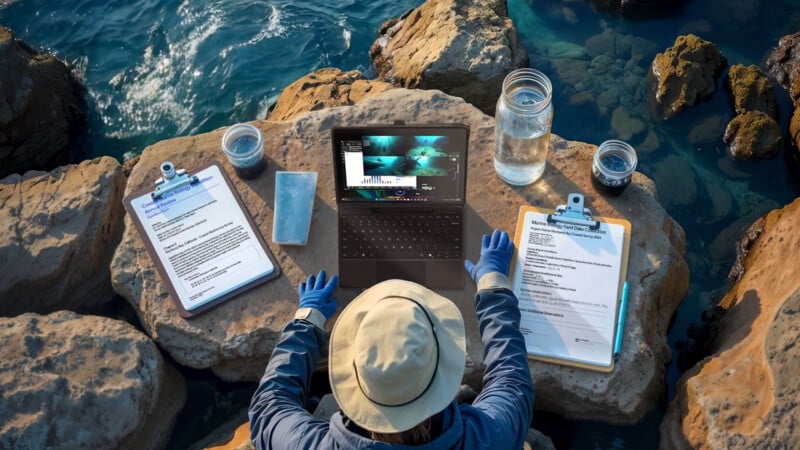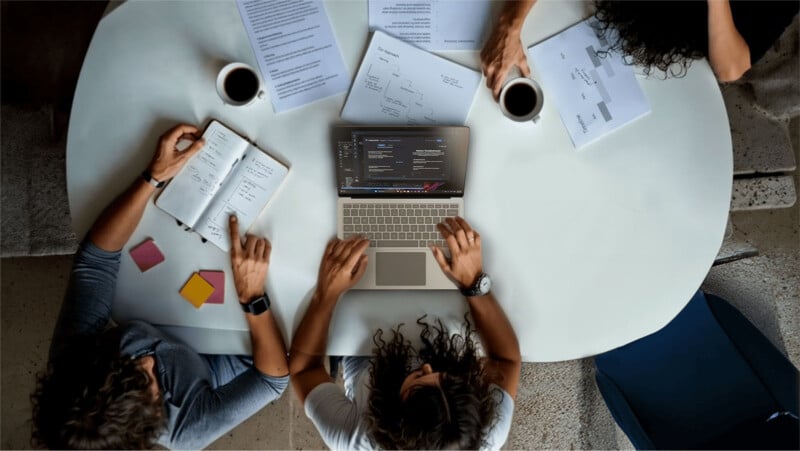Microsoft Released an AI-Generated Ad and People Didn’t Realize

Microsoft released a minute-long ad for its Surface Pro and Surface Laptop with generative AI and nobody noticed until the company pointed it out.
In a blog post published last week, Microsoft explains that the advert (below) was released three months ago and the team behind it used chatbots, AI image generators, and AI video tools to bring the spot to life.
The video follows a series of top-down shots looking at different people working in various environments. Pausing the video to take a closer look at some of the individual shots reveals AI artifacts, but the way the video is edited — with fast transitions — makes them barely perceptible when viewing at full speed.
This was an intentional creative decision made by Microsoft’s Visual Design Team Brian Townsend and Cisco McCarthy who chose AI-generated clips with limited motion to hide any weird AI artifacts as much as possible. The team determined that any intricate movement such as closeups of hands typing on keyboards had to be shot live, according to Microsoft.

“The team employed a blend of AI and traditional video production tools to meticulously compose frames and correct any unnatural elements,” reads Microsoft’s blog post. “Each frame was carefully curated, removing anything that looked weird and out of place, and ensuring only the most compelling elements remained. Additionally, the team made a conscious effort to use top-down shots to limit hallucinations and maintain visual coherence.”
Part of the reason the design team turned to AI is because of the short turnaround on the ad; just one month. After generating a still image they liked, the team would use generative AI video apps like Hailuo or Kling to add motion.
“With a small budget and a tiny amount of time, we were able to accomplish in a month what would have traditionally required exponentially more resources. We probably saved 90% of the time and cost it would typically take,” says Townsend.

Microsoft says that AI also allowed the team to experiment with more ideas and explore more locations. “The faster we can make something move, the more creative freedom it gives us,” adds Townsend.
The Verge notes that despite the fact the ad has been up on YouTube for nearly three months and received around 50,000 views, nobody apparently noticed the AI-generated shots.
“[It] suggest[s] that in the right hands, AI tools are now powerful enough to go unnoticed,” the publication adds.